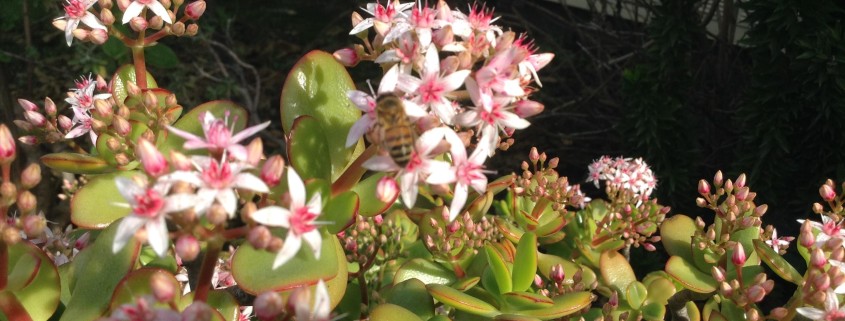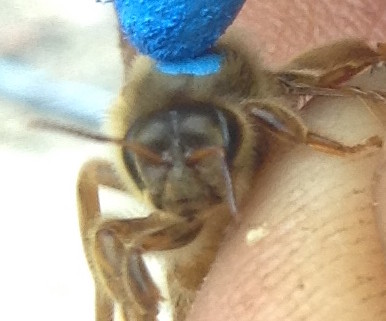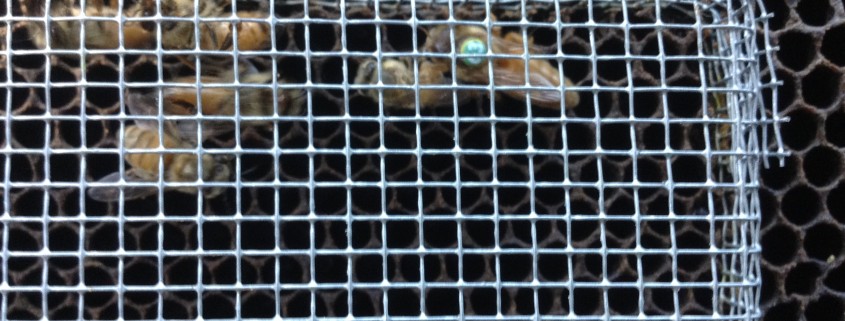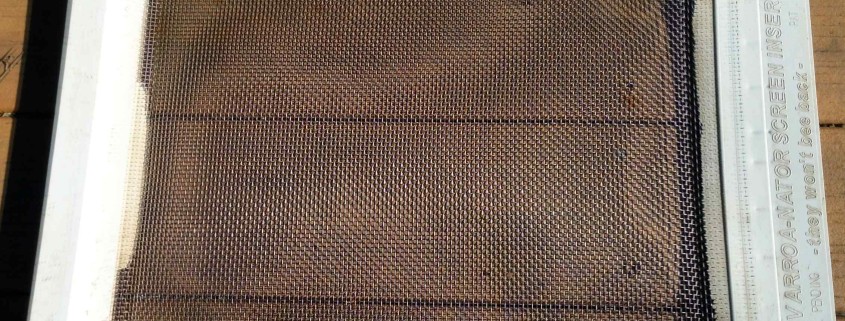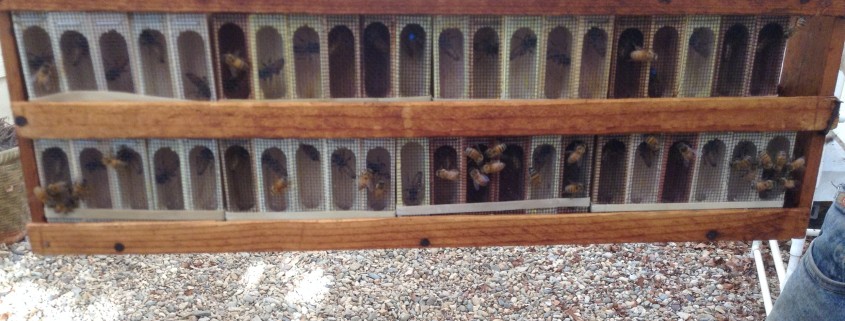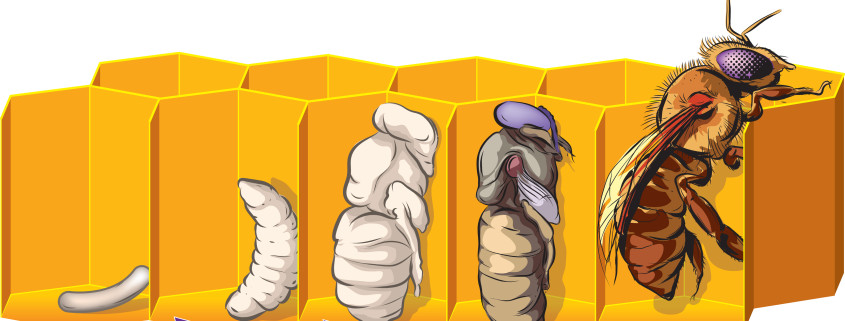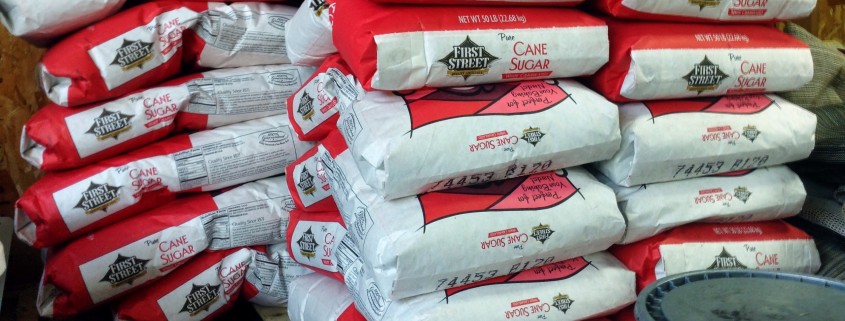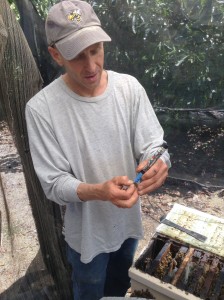Flowers In December
In the Northern Hemisphere, not too many plants offer honeybees blossoming flowers during December. One exception is the jade plant, also knows as Crassula Ovata. In most parts of the country, jade is a houseplant, but here in California, jade grows outside, primarily in outdoor household gardens. Jade, a native of South Africa, is a succulent plant that thrives in subtropical climates and doesn’t require much water. Therefore, it is especially popular with water-thrifty homeowners in California.
To produce blossoms, jade takes its cues from the weather. It needs long nights, cool and dry days. December in California fits the bill perfectly. Usually around the first week in December, buds appear, shortly thereafter followed by somewhat sticky, pink and white, star-shaped flowers.
The bees in our queen bee yard are usually rather dormant in December, taking a well-needed vacation from the hard work of raising queens over much of the year. Nevertheless, the blooming jade plants perk them up a little. Where else can a vacationing honeybee get a nice serving of fresh nectar in the middle of December?
Wildflower Meadows would like to thank all our customers and friends for a successful 2015. We wish each and everyone of you a joyous and happy holiday season. Our best wishes to you all for 2016!

